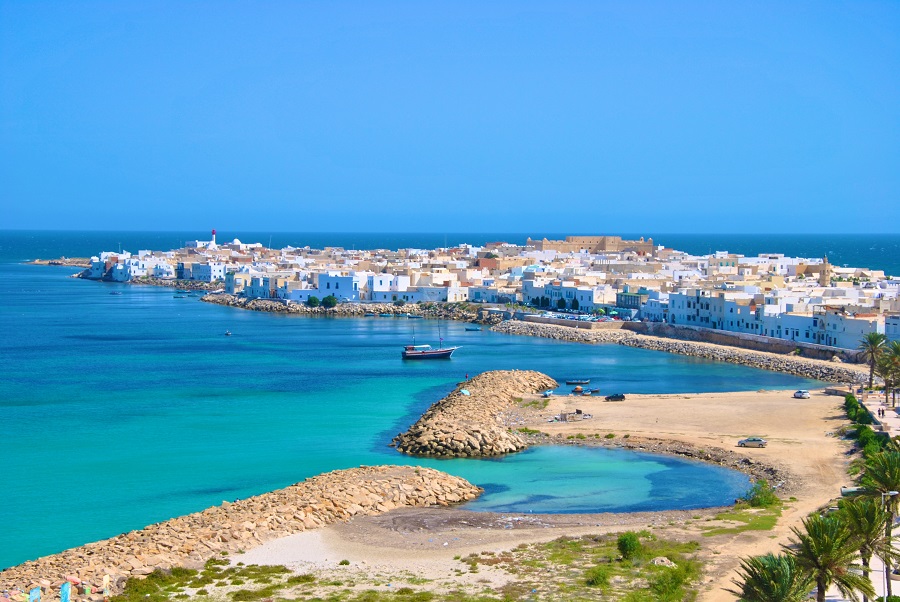
Mahdia was founded in the 10th century by the Fatimid Caliphate, making it a city steeped in history and significance. It served as the Fatimid capital before they moved to Egypt and founded Cairo. This legacy is still visible in the city’s architecture and archaeological sites.
During the Middle Ages, Mahdia was a strategic Mediterranean port and played a vital role in regional trade and politics. Its fortifications and citadel helped protect the city from invasions and pirates, many of which are still standing today as testament to its storied past.
At the heart of Mahdia lies the Old Medina, a maze of narrow streets lined with whitewashed houses, bustling souks (markets), and artisan shops. The Skifa Kahla, an imposing fortified gate, serves as the main entrance to the old town and is a symbol of Mahdia’s medieval defenses.
One of the city’s most famous landmarks is the Great Mosque, built in the 10th century. Though partially ruined, it remains a remarkable example of Fatimid architecture, with its distinctive arches and decorative elements. The mosque’s proximity to the sea adds to its serene ambiance.
The harbor has been an economic lifeline for the city for centuries. Today, it’s a lively place filled with fishing boats, yachts, and waterfront cafes. The nearby marina attracts tourists and sailors alike, offering a beautiful view of the turquoise Mediterranean waters.
Mahdia’s coastline is dotted with stunning sandy beaches perfect for swimming, sunbathing, and water sports. The clean waters and gentle waves make it ideal for families and leisure seekers.
Popular beaches include:
Mahdia Beach – a long stretch of golden sand close to the city center.
Sidi Mahrez Beach – known for its clear waters and calm atmosphere.
Mahdia is also renowned for its vibrant cultural scene and delicious cuisine.
Throughout the year, the city hosts several festivals celebrating music, arts, and traditional crafts. These events provide visitors with a chance to experience Tunisian hospitality and cultural richness firsthand.
Seafood is a highlight of Mahdia’s culinary offerings. Freshly caught fish, octopus, and shellfish are prepared in traditional Tunisian styles, often seasoned with harissa and served with couscous or bread.
While preserving its historical charm, Mahdia has grown into a modern city with comfortable hotels, restaurants, and amenities for tourists. Its strategic location on Tunisia’s Sahel coast makes it a popular destination for domestic and international visitors alike.
Rich history: Explore ancient ruins, medieval architecture, and centuries-old traditions.
Beautiful beaches: Relax on pristine Mediterranean sands.
Authentic culture: Experience Tunisian hospitality, crafts, and cuisine.
Scenic views: Enjoy breathtaking coastal landscapes and vibrant harbor life.
Getting There: Mahdia is accessible by road from Tunis (about 200 km), Sfax, and Monastir. The nearest airports are Monastir Habib Bourguiba International Airport and Enfidha–Hammamet International Airport.
Best Time to Visit: Spring (March to May) and autumn (September to November) offer pleasant weather for sightseeing and beach activities.
Accommodation: Options range from traditional guesthouses and boutique hotels in the medina to modern resorts along the coast.
Mahdia is a captivating blend of history, culture, and natural beauty. Whether you’re a history buff, a beach lover, or a traveler seeking authentic experiences, Mahdia offers a unique and memorable journey into the heart of Tunisia’s Sahel region.